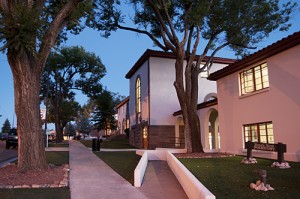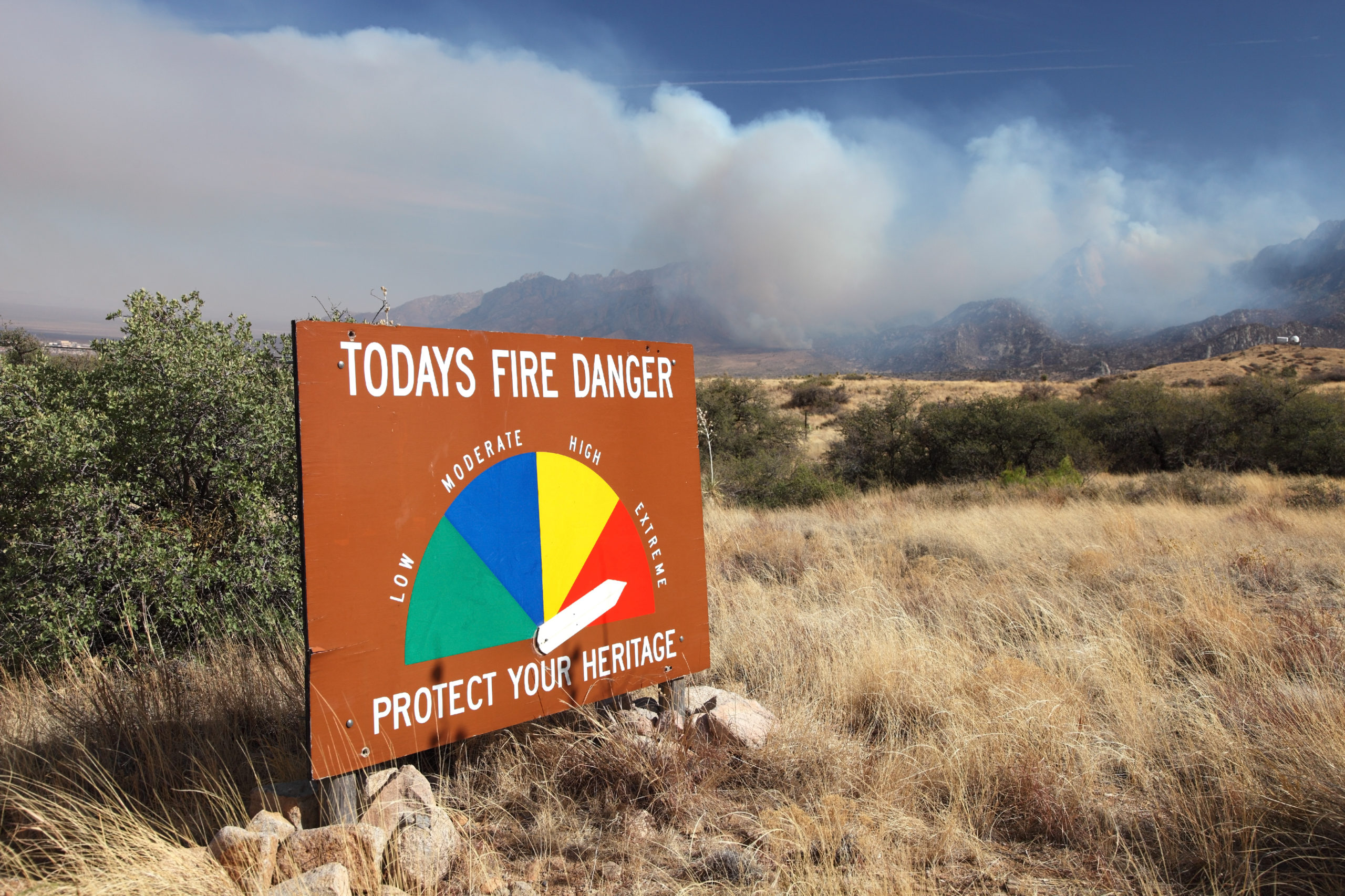 When the Hermit’s Peak and Calf Canyon Wildfires began, Highlands University stepped in to help
When the Hermit’s Peak and Calf Canyon Wildfires began, Highlands University stepped in to help
July 28, 2022
Kathryn Mahan, the ecological monitoring program manager for the New Mexico Forest and Watershed Restoration Institute at Highlands University, has been splitting her time between Kansas and her home in Las Dispensas. Mahan said she was in Kansas in early April and in the middle of packing up her belongings and her young daughter to head to her home in Las Dispensas when she got word that her house had burned to the ground. She soon learned that her home was the first to burn in the early days of the Hermits Peak Fire—before it merged with the Calf Canyon Fire that ignited later in the month.
The Hermits Peak and Calf Canyon Fires, which started on April 6 and April 19 respectively and later merged into one megafire, were sparked by prescribed burns. As of late-July 2022, the fire encompassed 341,735 acres—the largest and most destructive wildfire in New Mexico’s history. While the fire is now 93% contained, officials estimate that over the past three months, more than 15,000 people were displaced by the fires from San Geronimo and Las Vegas in the south to Chacon and Guadalupita in the north. And while there are not yet official numbers for homes burned, the National Interagency Coordination Center Incident Management Situation Report issued on July 25 counted a total of 903 structures burned.
Highlands University was one of many resources called upon by the City of Las Vegas and San Miguel County Incident Command Team. When the United World College had to evacuate due to the fire’s proximity to Montezuma, NMHU housed over two hundred students and all faculty and staff for one night before they transitioned to the Glorieta Conference Center. NMHU also housed police officers, fire fighters, and evacuees—including employees like Mahan.
“Highlands was great. We had about 12 hours’ notice to reach out to Highlands and say, ‘We don’t have a house anymore,’” Mahan said. “Denise Montoya called to offer us housing on campus and to see if we needed anything.”
Mahan said she and her daughter stayed in one of Highlands University’s family dorms for a month. She said she kept working the entire time. In her current role at the NM Forest and Watershed Restoration Institute, Mahan assesses catastrophic wildfire risk as a part of her job.
“I’m really thankful that this is the field that I work in right now because I’ve seen a lot of my friends and my neighbors struggle with hopelessness in response to this,” Mahan said. “We have things that we know we can do. We have colleagues who have science and research about post-fire rehabilitation, and then we have all of this monitoring data, so we have lots of things that we can be doing and information we can be sharing.”
Mahan said her husband, who is a New Mexico native but had been employed in Kansas, quit his job there to return to New Mexico to help rebuild. Not only did Mahan and her family lose their home, but many relatives and neighbors lost homes and properties, too. She said that she and her husband will rebuild when they are able to do so financially.
“We have a greenhouse building that mostly survived—some of the roofing melted,” Mahan said. “We’re going to try to convert it into a place where we can spend the summer.”
When the Hermits Peak fire began and Mahan received news of the loss of her home, early reports in the news indicated that no homes had been lost.
“Emotionally, that was kind of hard. It felt like we weren’t being counted,” Mahan said. “So, in the midst of that, Highlands was great. They didn’t ask us to prove anything. They were just supportive however they could be. Denise called twice. Once to make sure we were okay, and again when they put together the policy to give folks administrative leave to make sure we knew about that and to make sure we knew about the website and some of the resources that were coming out.”
For Jim McKoen, a 74-year-old retiree and resident of Rociada, evacuation has been more complex. McKoen said he was evacuated from his home on April 22, stayed ten days at the official Memorial Middle School shelter, then moved to NMHU’s Viles & Crimmins residence hall at the beginning of May, where he has been ever since.
“The main reason they put me here was because I am disabled, and I have a dog,” McKoen said. “I lost a lot. My house is still there in the form, but I’ve been very sick.”
Although his home is still standing, McKoen said his brand-new trailer, with tools and equipment packed into it, was totally burned, as were most of the trees on his property. He moved to New Mexico from New Jersey six years ago and said he paid almost a quarter of a million dollars for his property. Trying to figure out what’s next and what resources he qualifies for has been complicated, particularly because of McKoen’s age and health.
“To try to put all the pieces together—there’s no blueprint. It’s hit or miss; if you find out something, then you know to file for it,” McKoen said. “I came out here for the hummingbirds and wildlife, but I don’t think I’m ever going to go back there to live. In my eyes, it’s a total loss.”
According to McKoen, 150 people came through the Memorial Middle School shelter during the ten days he slept there, mostly for showers, meals, and supplies. Only a handful of people slept there each night. McKoen said he was grateful when The American Red Cross got involved and helped transfer him and another disabled evacuee to the Highlands University residence halls. He said having a number he could call if he needed anything was a relief.
McKoen said that despite his disability, he has been volunteering at the Memorial Middle School shelter as much as possible.
“Even when I’m sick, I work there. I earn my keep,” McKoen said. “I helped dispense the food that came in, cleaned the floors, took out the garbage—anything that needed to be done.”
For McKoen, the shelter offered him community and a sense of purpose. He said he gave his truck to another volunteer at the shelter and is talking with a few other families displaced by the fire about letting one of them care for his house and land.
“These people have become my family. I made more friends in the past months than I did in six years,” McKoen said. “The only thing I’m looking for right now is if I can find a family that would take care of the house for me and benefit by living there.”
Although McKoen is uncertain about what’s next, he appreciates the ongoing support he’s received from Highlands as he navigates tough decisions about whether to return to Rociada or move away.
“Denise was very good; she always checked in on me,” McKoen said. “She took an interest in me, and she was great. I couldn’t ask for more.”

